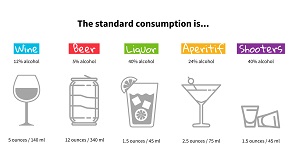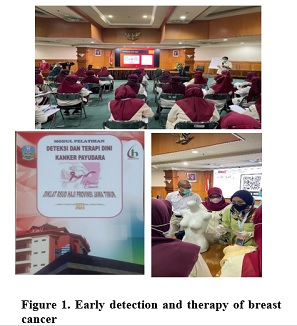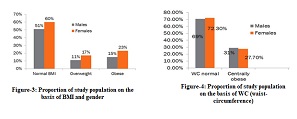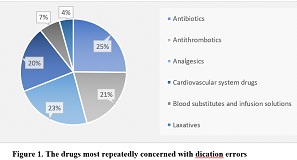NATIONAL HEALTH INSURANCE BASED TELEMEDICINE APPLICATION FOR HYPERTENSION MANAGEMENT IN PRIMARY LEVEL OF HEALTH FACILITIES

Downloads
Hypertension nowadays still becomes one of the severe problems in Indonesia, with a prevalence of 34% in 2018. The complication of hypertension causes the most deaths and disabilities in Indonesia and cost 75% of The Social Security Organizing Agency (BPJS) budget or IDR 15 trillion in 2019. This problem was probably caused by patients' lack of knowledge and limited personnel at the primary health centre (PHC). Telemedicine is a health care provider without any direct contact, which has various methods. Today, telemedicine in Indonesia is growing rapidly along with technology and legal regulation in its implementation, increasing users by 700% in the first year of 2020. Despite the rise of those numbers, telemedicine in PHC is still limited. Recently, the Ministry of Health and various organizations have issued telemedicine regulations at primary level health facilities in collaboration with The Social Security Organizing Agency. This review aims to discuss the current implementation and the potential future of telemedicine-based hypertension management in collaboration with the Social Security Organizing Agency in PHC.
Indonesian Society of Hypertension (2019). Konsensus Penatalaksanaan Hipertensi 2019
Ministry of Health, Republic of Indonesia (2018). Laporan nasional RISKESDAS 2018. Jakarta, Kementerian Kesehatan RI
WHO (2010). Telemedicine: Oppor-tunities and Developments in Member States. e-Health series. Geneva, WHO
Ministry of Health, Republic of Indonesia (2019). Peraturan Menteri Kesehatan No. 20 Tahun 2019 tentang Penyelenggaraan Pelayanan Tele-medicine Antar Fasilitas Pelayanan Kesehatan. Jakarta, Kementerian Kesehatan RI
Ministry of Health, Republic of Indonesia (2019). Laporan Kinerja. Jakarta, Direktorat Pencegahan dan Pengendalian Penyakit Tidak Menular
Mathavan J, Pinatih GNI (2017). Gambaran tingkat pengetahuan terhadap hipertensi dan kepatuhan minum obat pada penderita hipertensi di wilayah kerja Puskesmas kintamani I, Bangli-Bali. Intisari Sains Medis, 8(3), 176-180
Badan Perencanaan Pembangunan Nasional (2018). Penguatan Pelayanan Kesehatan Dasar di Puskesmas. Jakarta, Direktorat Kesehatan dan Gizi Masyarakat
Republic of Indonesia (2011). Undang Undang No. 24 Tahun 2011 tentang Badan Penyelenggara Jaminan Sosial. Jakarta, Sekretariat Negara
Badan Penyelenggara Jaminan Sosial (2020). Laporan Pengelolaan Program Tahun 2019 dan Laporan Pengelolaan Keuangan Tahun 2019 (Auditan), Jakarta, The Social Security Organizing Agency Kesehatan
Ministry of Health, Republic of Indonesia (2020). Rakernas Pem-biayaan Kesehatan dalam Penguatan Promotif Preventif. Jakarta, Kemen-terian Kesehatan
Badan Pemeriksa Keuangan Republik Indonesia (2021). Pendapat BPK. Pengelolaan atas Penyelenggaraan Program Jaminan Kesehatan Nasional 2021. Jakarta, BPK RI
Ryu S (2010). History of Tele-medicine: evolution, context, and transformation. Healthc Inform Res, 16(1), 65
Nurhayati H (2020). Smartphone users in Indonesia 2015-2025. Statista
Ariyanti S, Kautsarina K (2017). Kajian Tekno Ekonomi pada Telehealth di Indonesia. Buletin Pos dan Telekomunikasi, 15(1), 43-54
Prabowo SA, Rizky M, Mashuri MA (2020). Imple-mentasi E-Health sebagai alternatif antrian online di Puskesmas Kalirungkut kota Surabaya. Jurnal Syntax Transformation, 1(2)
Ho LLK, Li WHC, Cheung AT (2020). Impact of COVID-19 on the Hong Kong youth quitline service and quitting behaviors of its users. Int J Environ Res Public Health, 17, 8397
Gafi A, Hidayat W, Tarigan F (2020). Pengaruh penggunaan media sosial whatsapp dan booklet terhadap pengetahuan dan sikap siswa tentang rokok di SMA Negeri 13 Medan. Jurnal Muara Sains, Teknologi, Kedokteran dan Ilmu Kesehatan, 3(2), 281
Wijesooriya NR, Mishra V, Brand PL, et al (2020). COVID 19 and telehealth, education, and research adaptations. Paediatr Respir Rev, 35, 38-42
Jatmiko W, Masum M, Isa S, et al (2015). Developing a smart telehealth system in Indonesia: Progress and challenge. In: International Conference on Advanced Computer Science and Information Systems 2015. Depok, Institute of Electrical and Electronics Engineers Inc, 29-36
Combi C, Pozzani G, Pozzi G (2016). Telemedicine for developing countries. Appl Clin Inform, 7(4), 1025-1050
Wang JG, Li Y, Chian YC, et al (2021). Telemedicine in the management of hypertension: evolving technological platforms for blood pressure telemonitoring. J Clin Hypertens, 23(3), 435-439
Turana Y, Tengkawan J, Soenarta AA (2020). Asian management of hypertension: Current status, home blood pressure, and specific concerns in Indonesia. J Clin Hypertens, 2020(22), 483–485
Wernhart A, Gahbauer S, Haluza D (2019). eHealth and telemedicine: Practices and beliefs among healthcare professionals and medical students at a medical university. Plos One, 14(2), e0213067
Copyright (c) 2021 Pandit Bagus Tri Saputra, Nabila Izzati, Primadita Esther Rosita, Desy Trilistyoati, Nur Moya Isyroqiyyah, Iffa Halimah Hasna, Niamita Eka Puspita Putri, Ervina Dyah italoka, Muhammad Rifqi Arya Putra, Andi Lestari Rahman, Lilik Djuari

This work is licensed under a Creative Commons Attribution-ShareAlike 4.0 International License.
- The journal allows the author to hold the copyright of the article without restrictions.
- The journal allows the author(s) to retain publishing rights without restrictions.
- The legal formal aspect of journal publication accessibility refers to Creative Commons Attribution Share-Alike (CC BY-SA).
- The Creative Commons Attribution Share-Alike (CC BY-SA) license allows re-distribution and re-use of a licensed work on the conditions that the creator is appropriately credited and that any derivative work is made available under "the same, similar or a compatible license”. Other than the conditions mentioned above, the editorial board is not responsible for copyright violation.































